The article explores the fascinating diversity of birds that lay blue eggs. From the American Robin to the Eastern Bluebird and Starling, there are numerous species that produce these vibrant-colored eggs. Bluebirds, like the Eastern, Mountain, and Western Bluebird, typically lay pale blue to white eggs, but they prefer to nest within cavities rather than outside. House Finches are another type of bird that lays bluish-green eggs and often utilizes a nestbox. Notable species such as Red-winged Blackbirds, Blue-footed Boobies, Gray Catbirds, Snowy Egrets, Goldfinches, and Starlings also lay blue eggs. The color of the eggs is a result of biliverdin and protoporphyrin molecules, which create blue and green pigments. These colored eggs provide both camouflage and temperature regulation for the developing embryos. Additionally, observing blue eggs in a nest can offer valuable insights into the health of the mother bird and the well-being of the chicks. With unique colors and patterns found on the eggshells, each species further distinguishes itself. In essence, the diversity of birds that lay blue eggs showcases a captivating trait that connects various species across different habitats and continents.
Species of Birds that Lay Blue Eggs
Many species of birds are known for laying beautiful blue eggs. These eggs are a fascinating trait that connects different species across habitats and continents, showcasing the diversity of birds. Here are some of the bird species that lay blue eggs:
American Robin
The American Robin is a well-known bird that is often associated with the arrival of spring. These birds lay beautiful blue eggs in their nests. The blue color of the eggs provides camouflage, helping to conceal them from potential predators.
Eastern Bluebird
The Eastern Bluebird is another species known for its blue eggs. These birds are cavity nesters and will rarely lay their eggs outside of a cavity. Their eggs are typically pale blue to white in color.
Starling
Starlings are a common sight in many areas, and they also lay blue eggs. Their eggs are an attractive shade of blue, adding a splash of color to their nests. Like other birds that lay blue eggs, the color provides camouflage and helps protect the eggs from predators.
Red-winged Blackbird
Red-winged Blackbirds are known for their striking appearance, with the males sporting vibrant red and yellow shoulder patches. These birds also lay blue eggs, adding to their beauty and uniqueness.
Blue-footed Booby
The Blue-footed Booby, found in the Galápagos Islands and along the western coasts of North and South America, gets its name from its bright blue feet. These birds also lay blue eggs, which is another interesting feature of this species.
Gray Catbird
Gray Catbirds are known for their melodic calls and distinctive gray plumage. These birds lay blue eggs, which contrast beautifully with their overall coloration.
Snowy Egret
The Snowy Egret, with its striking white plumage and elegant stance, also lays blue eggs. This species is found in wetland habitats and its blue eggs provide a lovely contrast to their surroundings.
Goldfinch
Goldfinches are known for their vibrant yellow plumage, but they also lay blue eggs. These small and colorful birds add a touch of blue to their nests with their beautiful eggs.
House Finch
House Finches are common backyard birds that are well adapted to urban environments. These birds lay bluish-green eggs, which may be found in nestboxes or other suitable nesting sites.
Blue Jay
The Blue Jay is a bold and colorful bird known for its blue feathers and distinctive crest. Unsurprisingly, Blue Jays also lay blue eggs, adding to their overall beauty.
Egg Colors and Pigments
The beautiful blue color of these eggs is determined by the presence of specific pigments. The molecules biliverdin and protoporphyrin create the blue and green pigments that give the eggs their vibrant colors.
Biliverdin and Protoporphyrin
Biliverdin and protoporphyrin are pigments found in the bile of birds. These pigments are byproducts of the breakdown of red blood cells and are excreted in the bile. When birds lay eggs, some of these pigments make their way into the eggshells, giving them their characteristic colors.
Creating Blue and Green Pigments
The specific mechanisms by which these pigments create blue and green colors in the eggs are still being studied, but it is believed that the structure of the pigments plays a role. The arrangement of molecules in biliverdin and protoporphyrin causes them to absorb certain wavelengths of light and reflect others, resulting in the blue or green colors we see.
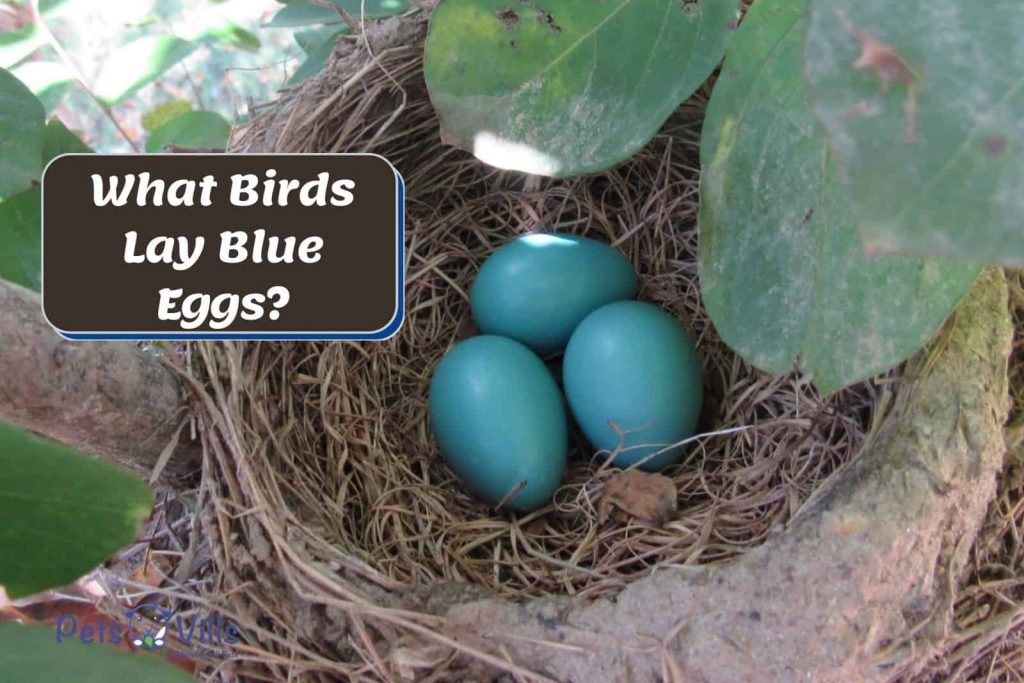
Camouflage and Temperature Control
The blue coloration of the eggs serves important purposes for the birds that lay them. One of the key benefits is camouflage. The blue color blends well with the natural surroundings, making it harder for predators to spot the eggs. This provides an added layer of protection for the developing embryos inside.
Additionally, the color of the eggs can help regulate temperature. Darker colors absorb more heat, while lighter colors reflect heat. By laying blue eggs, birds can maintain a stable temperature for their developing embryos, ensuring their survival.
Variation in Egg Color Throughout Laying Cycle
For birds that lay multiple eggs at a time, there can be variation in egg color throughout the laying cycle. This variation can be due to a variety of factors, such as different levels of pigments being deposited in each egg or changes in the bird’s physiology during the laying process.
Observing this variation in egg color can provide insights into the health of the mother bird and the well-being of the chicks. If one egg appears significantly different in color compared to the others, it could indicate a problem or abnormality.
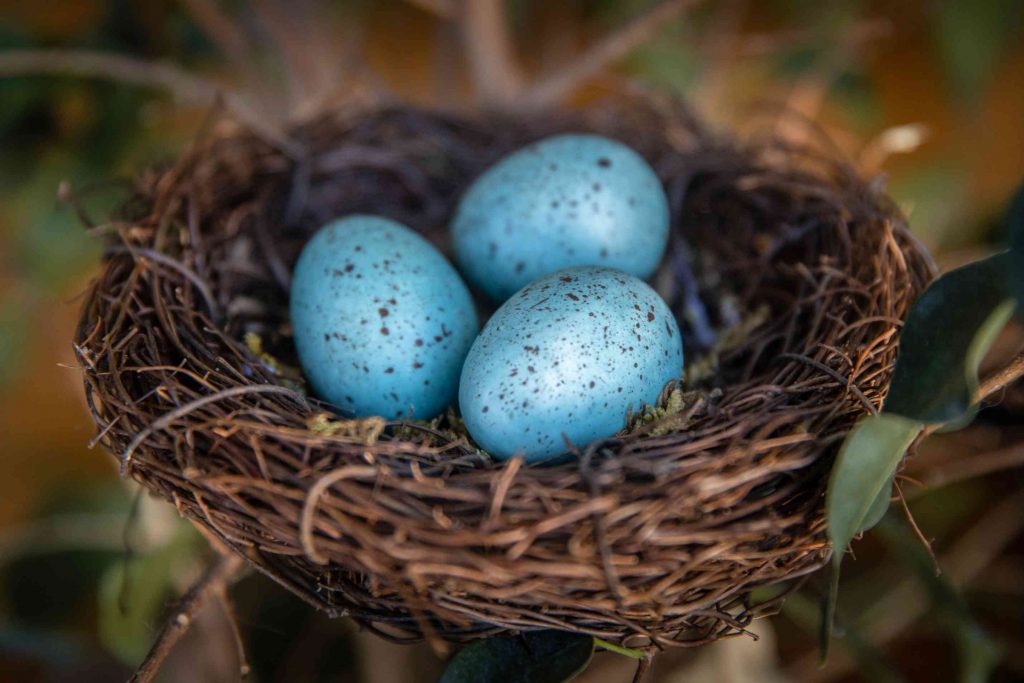
Insights from Observing Blue Eggs
Studying blue eggs in a nest can provide valuable insights into the reproduction and behavior of birds. For example, researchers can observe eggshell thickness and coloration to determine the health of the mother bird. Additionally, studying the hatching success and survival rates of chicks can provide information about the environmental conditions and the overall population of the bird species.
Variation in Eggshell Color and Patterns
While all blue eggs share a common coloration, there can be variation in the shade of blue and the patterns on the eggshells among different species. This variation adds to the beauty and uniqueness of each species and makes it possible to differentiate between different types of birds based on their eggs alone.
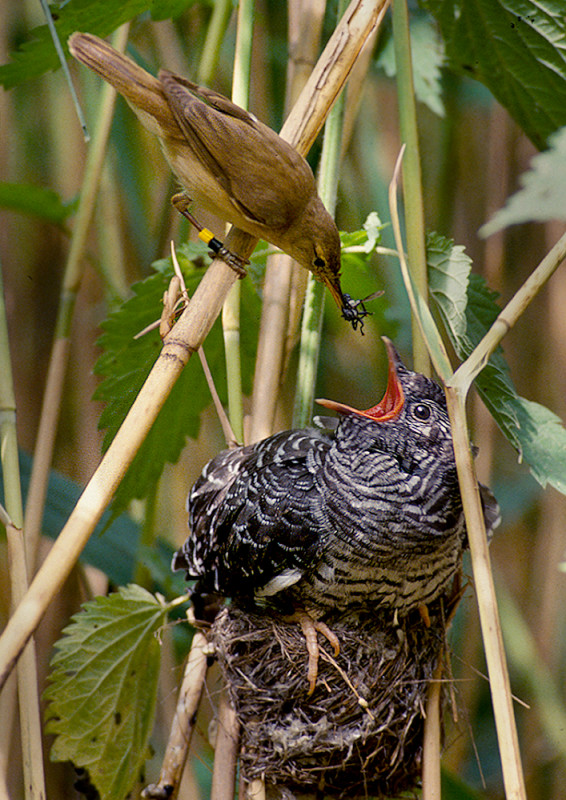
American Robin
American Robins are known for their bright orange breasts and cheerful songs. They are commonly found across North America and are known to lay beautiful blue eggs. The vibrant blue color of their eggs provides camouflage, helping to protect them from predators.
Eastern Bluebird
Eastern Bluebirds are cavity nesters and are commonly found in open woodlands and fields. They lay pale blue to white eggs, which are tucked safely inside their nest cavities. These birds are known for their striking blue plumage, making their blue eggs a fitting addition to their reproductive strategy.
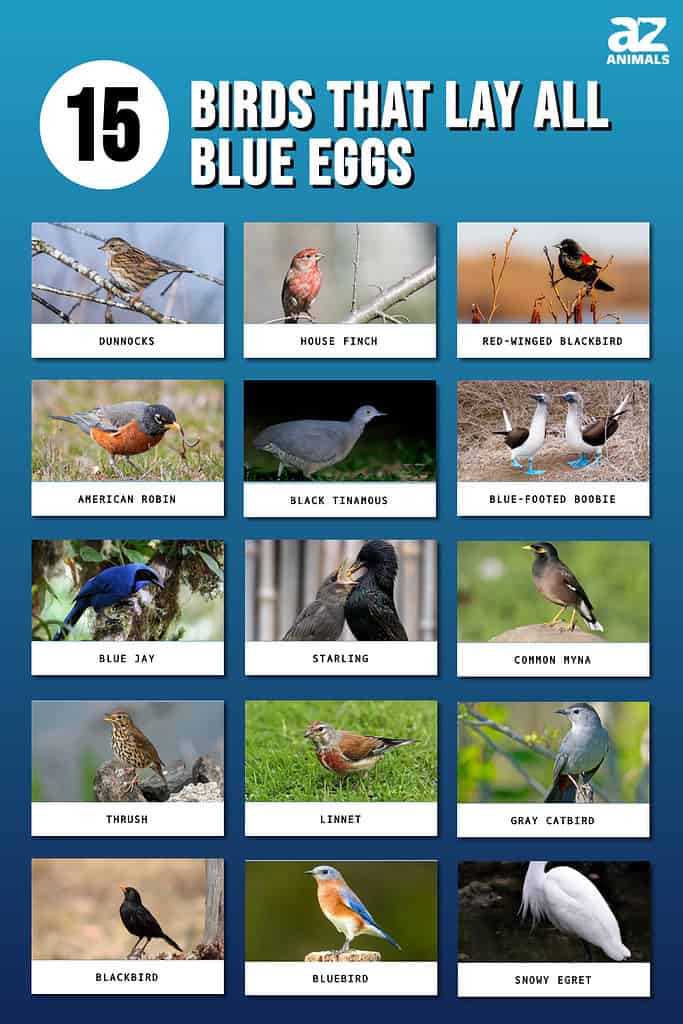
Starling
Starlings are an introduced species in many parts of the world and are known for their highly social behavior and chattering calls. These birds lay blue eggs, which can be found inside their nesting cavities or other suitable nesting sites. The blue color of the eggs adds to the overall beauty of their nests.
Conclusion
In conclusion, the presence of blue eggs among different bird species is a fascinating example of nature’s diversity. From familiar backyard birds like the American Robin and Blue Jay to more exotic species like the Blue-footed Booby, these birds lay blue eggs that serve important purposes such as camouflage and temperature control. Studying these eggs provides valuable insights into bird behavior, reproduction, and environmental health. The variation in eggshell color and patterns adds to the beauty and uniqueness of each species, showcasing the wonders of the natural world. Next time you come across a nest with blue eggs, take a moment to appreciate the intricate beauty and marvel at the incredible diversity of bird species.
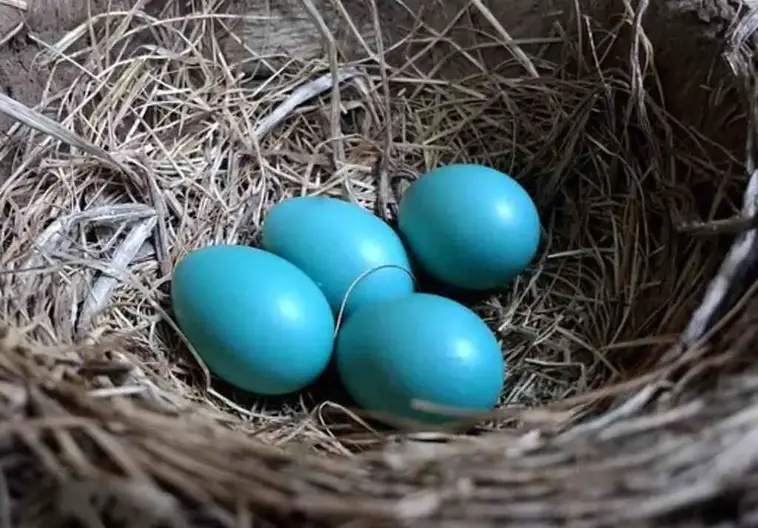
Leave a Reply